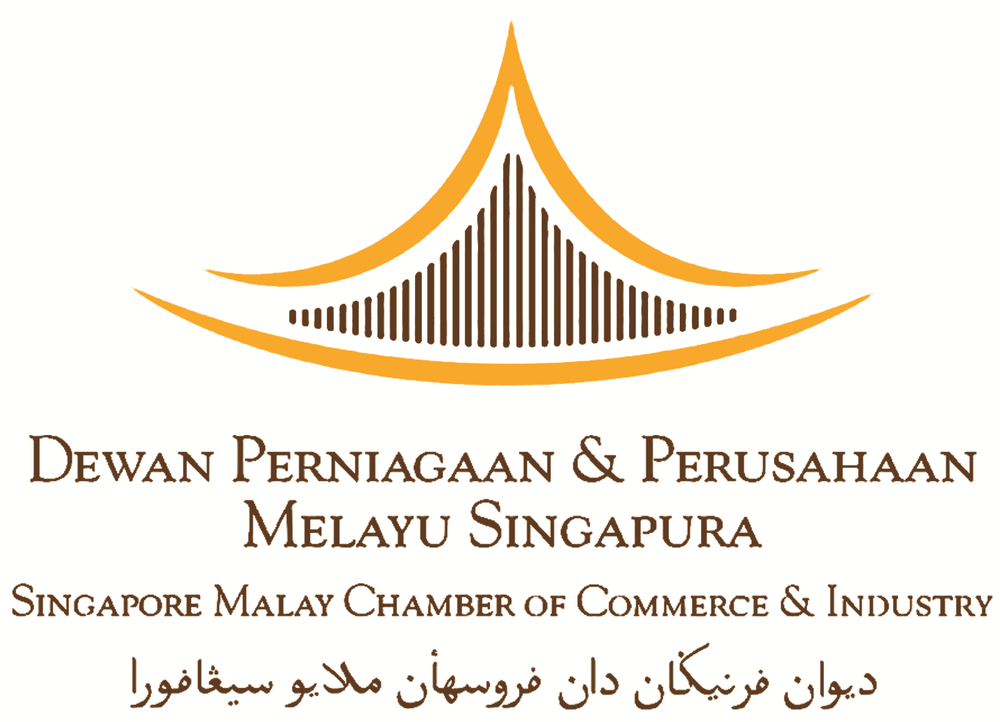- Real CBS Makeovers: 3 Case Studies of SME Owners Who Turned Bad Credit Around
- Ask SmartLend: Why Did My SME Loan Get Rejected?
- Introducing SmartLend Concierge: A Helping Hand for SME Loans
- Legal Ways to Lighten Your Company’s Tax Burden in Singapore
- A Wake-Up Call on Director Duties: The Envy Saga and Other Cautionary Tales in Singapore
- Surviving Cash Flow Crunch: How SMEs Can Use Short-Term Financing Wisely
- Unmasking Business Loan Fraud: How Syndicates and Rogue Brokers Game Singapore’s Lending System—and How AI Can Stop Them
- From Rejection to $60K Approval in 3 Days: How a Fishing Pond Business Got Funded Despite a Flawed Credit Report
- Lender Spotlight: How Poss Capital and SmartLend Partnered For Singapore SMEs
- Which Lender is Right for Your Business in 2025? Banks, Money Lenders, or Alternative Finance
Everything You Need To Know About Company Memorandum and Articles of Association

Introduction
As a business owner, you will have to deal with a lot of legal paperwork. When incorporating a company in Singapore, one of the essential documents you'll need to prepare is the company constitution. This legal document governs the internal management of the company and outlines its operating rules.
Previously, companies needed to prepare two separate documents, the Memorandum of Association and the Articles of Association, collectively known as M&AA. However, the Companies Amendment Act of 2014 has since replaced this requirement with a single document - the Company Constitution. In this guide, we'll walk you through everything you need to know about Singapore company constitutions, including their purpose, what they entail, and how to draft one for your business.
It was a requirement for companies incorporated prior to 3 January 2016 to possess two distinct constitutional documents.
- Memorandum of Association outlines the fundamental characteristics of the company.
- Articles of Association provide guidelines for a company's internal operations and its interactions with its members.
Say goodbye to M&AA! With the Companies Amendment Act of 2014, this requirement has been kicked to the curb. But fear not! The Company Constitution has stepped in to take its place.
What Is A Company Memorandum?
A company memorandum, also known as the memorandum of association, is a legal document that sets out the company's constitution, objectives, and powers. It defines the company's scope of business activities and its relationship with its shareholders and directors.
The company memorandum usually contains the following information:
- Name of the company
- Location of the registered office
- Objectives and purposes of the company
- Liability clause of the shareholders
- Share capital and the issue of shares
- Association clauses (i.e., the agreement of shareholders to form the company)
- Signatories and subscriber clauses
Let's explore these elements further.
Name of the company
The name of your company is the first thing that will appear on the company memorandum. It is the name that you have chosen for your business, and it must be unique and not identical to any other company names in Singapore. You can check the availability of your desired name with the Accounting and Corporate Regulatory Authority (ACRA) before registering your company.
Location of the registered office
The registered office is the official address of your company. It is the place where all legal correspondence will be sent, and where you will keep your company's records and documents. The registered office must be in Singapore, and you must provide the full address in the company memorandum.
Objectives and purposes of the company
The objectives and purposes of your company are the reasons why you have decided to form a business. You must be specific about the activities you will engage in and the goals you want to achieve. This information will help determine the scope of your business operations and the types of activities you can legally engage in.
Liability of the shareholders
The liability of the shareholders refers to the extent to which they are responsible for the debts and obligations of the company. In Singapore, there are two types of companies: companies limited by shares and companies limited by guarantee. In a company limited by shares, the liability of the shareholders is limited to the amount of their share capital. In a company limited by guarantee, the liability of the shareholders is limited to the amount they have agreed to contribute in case of the company's liquidation.
Share capital and the number of shares issued
The share capital is the amount of money that the company raises by issuing shares. The number of shares issued refers to the total number of shares that the company has authorized to issue. The company memorandum must specify the share capital and the number of shares issued, as well as the classes of shares if there are different types of shares.
Association clauses
The association clauses are the agreements among the shareholders to form the company and to become members. They outline the terms and conditions of the company's operation, such as the rights and obligations of the shareholders, the distribution of profits, and the procedures for the appointment and removal of directors.
Signatories and subscribers
The signatories and subscribers are the individuals who have signed the company memorandum and agreed to become members of the company. They must include their full names, addresses, and occupations.
Understanding Articles Of Association
Articles of Association, also known as bylaws or articles, are another legal document that outlines the internal rules and regulations of the company. In other words, the Articles of Association govern how the company is run on a day-to-day basis.
The articles of association usually cover the following topics:
Appointment and Powers of Directors: The Articles of Association lay out the procedures for the appointment and removal of directors, their powers, and the limits on their authority. It is important to note that directors are not agents of the shareholders and are not obliged to carry out their instructions unless such instructions are authorized by the Articles of Association.
Rights and Obligations of Shareholders: The Articles of Association define the rights and obligations of shareholders, including their voting rights, their entitlements to dividends, and the procedures for the transfer of shares. The articles may also outline restrictions on the transfer of shares, such as requiring approval from existing shareholders or the board of directors.
Procedures for Shareholder Meetings: The Articles of Association lay out the procedures for convening and conducting general meetings of the company, including the minimum notice period, the quorum required, and the procedures for voting.
Voting Procedures and Quorum Requirements: The Articles of Association outline the voting procedures for decisions taken at shareholder meetings. These may include the use of proxies, the required majority for passing resolutions, and the number of votes required for certain types of decisions. The articles may also specify the quorum required for holding meetings, which is the minimum number of shareholders or shares required to be present for a meeting to be valid.
Share Transfer Restrictions: The Articles of Association may impose restrictions on the transfer of shares, such as requiring approval from existing shareholders or the board of directors. This is to ensure that the company's ownership structure remains stable and that existing shareholders have a say in who becomes a shareholder.
Dividend Policies: The Articles of Association may outline the company's dividend policies, including the procedures for declaring and paying dividends. These policies may take into account the company's financial performance, the needs for reinvestment in the business, and the expectations of shareholders.
Borrowing Powers and Financing Arrangements: The Articles of Association may specify the borrowing powers of the company and the procedures for obtaining financing. This is to ensure that the company has the necessary resources to achieve its objectives while avoiding excessive debt levels.
Dispute Resolution Mechanisms: The Articles of Association may specify the procedures for resolving disputes between shareholders or between shareholders and the company. This may include mediation, arbitration, or litigation.
Differences Between Company Memorandum And Articles Of Association
While the Company Memorandum and Articles of Association are both important legal documents that govern a company's operations, they differ in several ways.
Public vs. Private Document
The Company Memorandum is a public document that sets out the company's constitution, objectives, and powers. It is filed with the Accounting and Corporate Regulatory Authority (ACRA) and is available for public inspection. On the other hand, the Articles of Association are a private document that governs the company's internal affairs and is not available for public inspection.
Relationship between the Company and Shareholders
The Company Memorandum establishes the relationship between the company and its shareholders, while the Articles of Association define the relationship among the shareholders and between the shareholders and the directors. The Memorandum outlines the company's objectives, scope of business activities, and the powers and liabilities of the shareholders.
The Articles, on the other hand, deal with the internal management of the company, including the procedures for appointing directors, conducting meetings, and issuing shares. They also outline the rights and responsibilities of shareholders and the company's directors. The Articles serve as a legal contract between the company and its shareholders, as well as between the shareholders themselves.
As an entrepreneur or SME owner, it's essential to understand the Articles of Association to ensure that your company's internal management is in line with the law and best practices. Here are some of the key provisions typically included in the Articles:
Share capital and shares
The Articles will specify the amount of share capital the company can issue and the types of shares it can issue. They will also set out the rights and obligations associated with each type of share, such as voting rights, dividend entitlements, and restrictions on transfer.
Directors
The Articles will outline the procedures for appointing directors, including the qualifications and disqualifications for directors, the process for nominating and electing directors, and the length of their term in office. They will also define the powers and duties of directors and the procedures for their removal.
Shareholders' meetings
The Articles will set out the procedures for convening and conducting shareholders' meetings, including the quorum requirements, the notice period, and the agenda for the meeting. They will also detail the procedures for voting at meetings and the rights of shareholders to propose resolutions.
Alteration of the Articles
The Articles will specify the procedures for amending the Articles, including the quorum and majority requirements for passing resolutions to amend them.
Winding up
The Articles will outline the procedures for winding up the company, including the appointment of liquidators, the distribution of assets, and the procedures for calling creditors' meetings.
In brief, the Memorandum and Articles of Association are essential legal documents that every Singaporean entrepreneur or SME owner should understand. They provide the legal framework for the company's incorporation, governance, and internal management. Failure to comply with the provisions in these documents can result in legal and financial repercussions. Therefore, it's essential to seek professional advice when drafting or amending the Memorandum and Articles of Association to ensure compliance with Singapore's laws and regulations.
Registering Your Company Constitution
To register a company in Singapore, it is required by law to submit its constitution to the Singapore Company Registrar, also known as ACRA. This is outlined in Section 19 of the Companies Act.
When a company decides to use a model constitution, there is no need to register it during the incorporation process. You will learn more about adopting a model constitution later.
Instead, the company must specify which model they have chosen, such as a company with limited shares or a company with limited guarantee, when they submit their registration application.
The company's constitution is adopted at the time of company formation, and a declaration must be made to the Registrar by a person named either a secretary or a director in the proposed company's constitution, verifying the subscribers' identity and the officers of the proposed company.
However, the proposed company's constitution can be rejected by the Registrar if the business activities set up by the company seem unlawful or disturb the peace and welfare of the Singapore public, or if registration seems contrary to Singapore's interest and national security.
The company must keep its constitution at the registered office, and all the constitution's subscribers must sign it, indicating how many shares they have agreed to hold.
The Company Constitution must always be open for inspection at the company's registered office, and a copy can be sent to a member upon request.
Members who serve as fixed company directors are subject to a fee of S$5 or less.
Singapore Company Law requires your compliance with these provisions, or you will surely suffer the consequences and pay the price. So don't be a lawbreaker, be a rule follower!
Drafting Your Company Constitution
When setting up a new company in Singapore, one of the essential steps is to draft a Company Constitution. It's a official document that governs the company's internal management and lays down the rules for the company's operations. There are two ways to draft a Company Constitution: create one from scratch or adopt the model constitution provided by ACRA, i.e. model constitution provided in the Companies (Model Constitutions) Regulations 2015. But which option is best for your business?
Creating a New Constitution
Creating a new constitution offers the flexibility to set rules and guidelines as per the company's requirements, while adopting a model constitution saves time and ensures compliance with the Singapore Companies Act. Private companies limited by shares have a model constitution in the First Schedule of the Regulations, while private companies limited by guarantee have one in the Second Schedule.
Buying And Adopting a Model Constitution from ACRA
Singapore provides transparency for all registered companies, and their basic registration details are available for free on BizFile+ portal. For more detailed information, any company can purchase extracts of forms filed with ACRA, such as financial statements, annual returns, and incorporation certificates, with or without attachments.
Remember that it is crucial to include all necessary provisions in a Company Constitution, as the absence of any provision may lead to difficulties and ambiguities in the company's later stages. Seeking assistance from experts like Smart-Towkay can ensure that the Company Constitution aligns with the company's objectives and complies with the Singapore Companies Act.
Procedure For Amending A Singapore Company Constitution
A Company Constitution outlines the rules and regulations that govern a company. There are two procedures for amending a Company Constitution, depending on whether the amendments alter the company objects or not.
When Company Objects Are Not Altered
In accordance with Section 26 of the Singapore Companies Act, if the company's objectives remain unchanged, a special resolution must be passed at an Extraordinary General Meeting (EGM) to amend the constitution.
Private companies must give a 14-day heads up before holding their EGM, while public companies must give a 21 days notice.
The notice for the EGM should include the date, agenda, and require 75% support for special resolutions.
After passing the resolution, the company is required to provide ACRA with copies of the special resolution and the amended constitution. They must be submitted to ACRA within 14 days via BizFile+.
Following this, ACRA will issue a registration notice for the resolution, and the amendment will go into effect on the specified date.
When Company Objects Are Altered
If the amendments alter the company objects, the procedure outlined in Section 33 of the Companies Act must be followed. A special resolution must be passed in an EGM, which can only include alteration to company objects.
The company must issue a written notice to all members at least 21 days before the EGM. The special resolution cannot modify any other provisions of the constitution. If other amendments are required, they must be made in a separate special resolution.
According to regulations, the resolution that modifies the company's objectives must undergo a 21-day waiting period before being submitted to ACRA. After this period, the company has 14 days to submit it to ACRA.
Frequently Asked Questions
What is the difference between company memorandum and articles of association?
The company memorandum lays down the law on the company's constitution, objectives, and powers, while the articles of association serve as the internal rulebook such as rules and regulations for running the company.
Are company memorandum and articles of association required by law?
Yes, they are required by law for the registration of a company.
Can the company memorandum and articles of association be amended?
The company memorandum can only be altered by a special resolution passed by the shareholders, while the articles of association can be amended by a special resolution of the shareholders or by the board of directors.
Who should draft the company memorandum and articles of association?
It is recommended to seek legal assistance from a qualified lawyer or a professional company formation agent if you want to create from scratch. You can purchase extracts of forms filed with ACRA and adopt a Constitution on BizFile+ portal.
What should be included in the company memorandum and articles of association?
Key provisions that reflect the company's objectives, values, and operations should be included, covering the company's management structure, decision-making processes, shareholding structure, and dispute resolution mechanisms.
Read also: Everything You Need To Know About Registering a Patent In Singapore
Read also: Things to Take Note When Setting Up A Company in Singapore
Read also: Understanding Your Credit Report from Credit Bureau Singapore - Business Owner Edition 2021
-------------------------------------------------------------------------------------------------------
Got a Question?
WhatsApp Us, Our Friendly Team will get back to you asap :)
Share with us your thoughts by leaving a comment below!
Stay updated with the latest business news and help one another become Smarter Towkays. Subscribe to our Newsletter now!
Related
.png)
Which Lender is Right for Your Business in 2025? Banks, Money Lenders, or Alternative Finance
Jul 02, 2025














